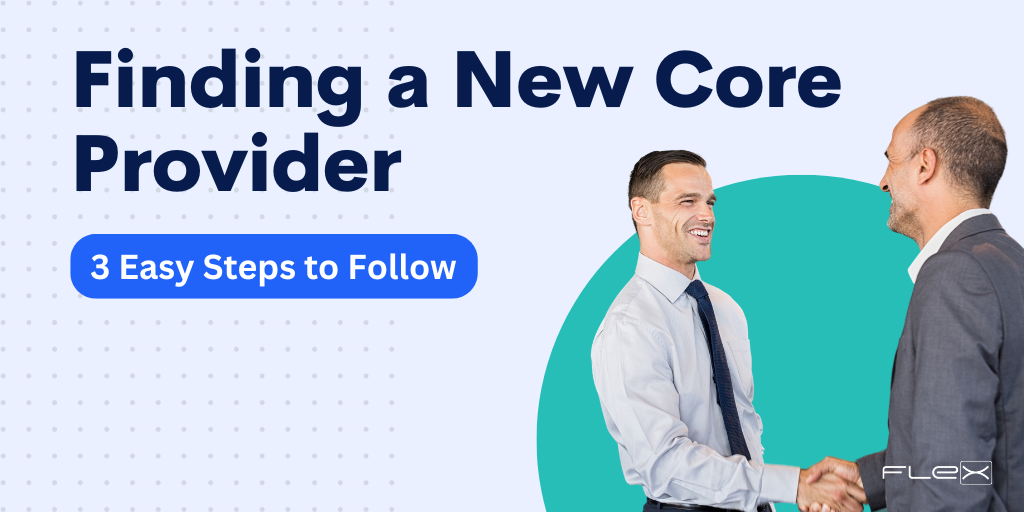3 Ways To Identify Key Core Players
 Switching core providers is a huge undertaking. Whether your existing system is outdated, or your credit union is simply dissatisfied with its capabilities, it may be time to consider a new core provider. With so many providers on the market, it can be difficult to narrow down the options to a list of key players. Here are three ways your credit union can identify, rank and choose a new core data processor.
Switching core providers is a huge undertaking. Whether your existing system is outdated, or your credit union is simply dissatisfied with its capabilities, it may be time to consider a new core provider. With so many providers on the market, it can be difficult to narrow down the options to a list of key players. Here are three ways your credit union can identify, rank and choose a new core data processor.
List Your Options
In order to find a core provider that’s a good fit for your credit union, it can be beneficial to first look at similar size credit unions who have recently switched core systems. Industry websites and publications often announce credit unions that have recently switched to a new core vendor. This is one way your credit union will be able to identify core providers that winning the business of credit unions with similar asset size, membership, growth goals, etc. In addition to industry news, consider the Callahan & Associates 2019 Supplier Market Share Guide for Credit Union Core Processors. This will provide the non-biased data of which core system vendors are growing in client base and which ones are losing customers in droves. Considering these resources and the core systems they mention, in addition to others that may have been recommended, can be added to a list of options that your credit union can investigate further. A typical core system review takes six months to one year for evaluation, then another 12 months to complete the actual core conversion, so set your expectations accordingly! Finding and implementing the right core platform for your credit union will take some time.
-4.jpg?width=600&name=Untitled-Project%20(2)-4.jpg)
Analyze Performance
After curating a list of potential providers, your credit union can then do a deeper dive and research these options. There are several resources that evaluate credit union performance, and some key performance indicators (KPIs) will give your credit union an understanding of the efficiency of a particular core provider across its client base. By looking at metrics such as assets, members, loan growth, operating expense over average assets, Return on Assets (ROA) and the efficiency ratio, your credit union can determine how the core system has generally affected these measures. 5300 Call Reports created by NCUA are one way to look at a credit unions performance. While these reports are a wealth of information, they do not enable easy comparison between two credit unions or more specifically two core systems. However, Callahan & Associates Core Market Share Guide is a good resource to compare any given core processor's overall client performance. While there are many variables in play to the success of a credit union and their overall efficiency, these comparisons will provide an overall idea of what credit unions are accomplishing with their data processing providers.
Seek Peer Input
Once your CU has reviewed and compared the client performance of multiple core technology vendors, it can be helpful to ask credit union leaders and CEOs about their experience with their current core software solution. While the numbers might show a particular core system has been effective in lowering operating expenses and increasing loan growth, it says nothing about important qualitative factors. The conversion process is certainly something to consider because even if the core is providing great results after implementation, it may not be the best option if the conversion process was a nightmare. Talking with those who have recently converted will help your credit union set good expectations, but talking with those who have been using the system for two or more years will provide more insight into the level of support a provider can offer throughout the relationship. Talking with peers in the industry will help your CU gain some genuine and unbiased input about the day-to-day use of a particular core system.
Making the leap to a new core provider can be a daunting task. Core technology is one of the most integral components of a credit union as it affects almost every area of operation. However, with the proper research, your credit union can be confident that you have chosen a technology partner that is the perfect fit for your credit union’s culture, growth and future needs.



